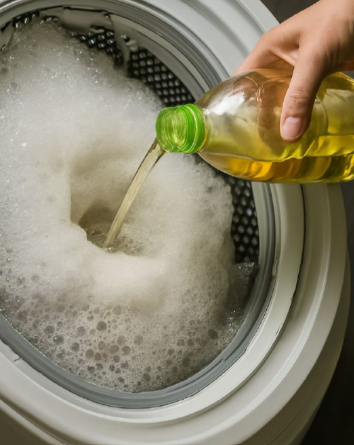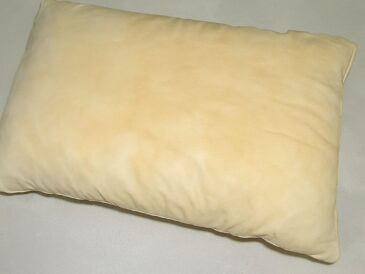Vinegar might seem like a modest pantry staple, but it quietly holds the power to transform one of the most frustrating aspects of your daily routine—your laundry. If your once-white shirts are fading into dull gray and your towels feel more like sandpaper than softness, vinegar might be the simple, affordable solution you’ve been overlooking.
Yet, despite its potential, many people use vinegar incorrectly in their laundry, often adding it at the wrong time or in the wrong way. In this guide, you’ll learn exactly how to harness vinegar’s natural cleaning power to get noticeably brighter whites, softer towels, and fresher-smelling laundry—all without relying on commercial chemicals or synthetic fabric softeners.
Why Vinegar Deserves a Place in Your Laundry Room
Vinegar isn’t just for salad dressings and kitchen counters. Distilled white vinegar, in particular, has a composition that makes it uniquely suited for fabric care. It contains acetic acid—a gentle yet effective agent that helps break down minerals, residues, and odors without damaging your clothes or your washing machine.
Let’s take a closer look at what makes vinegar so powerful in the laundry process.
1. A Gentle Brightener for White Fabrics
White clothing tends to dull over time, often due to detergent buildup, hard water minerals, or dirt particles that cling to fabric fibers. Vinegar acts as a natural fabric clarifier. Its mild acidity helps dissolve these residues, restoring your whites to their original brightness without the harshness of bleach.
Best practice: Add 1 cup of distilled white vinegar directly into the rinse cycle—not the wash cycle—to allow it to act on fabric after detergent has done its job. This timing is key.
2. A Safe Alternative to Fabric Softeners
Fabric softeners might make laundry feel nice initially, but over time they can leave behind a waxy residue that builds up and traps odor. This is especially true for towels, which can lose their absorbency and softness.
Vinegar, on the other hand, helps break down detergent and fabric softener residues, leaving fabrics clean and naturally soft.
Best practice: Add ½ cup of vinegar to the rinse cycle when washing towels, washcloths, or bathrobes. The result? Noticeably fluffier and more absorbent linens.
3. Neutralizes Lingering Laundry Odors
From gym clothes to kitchen towels, certain fabrics hold onto smells even after a normal wash. Vinegar helps neutralize these odors by altering the pH level in your washing machine and dissolving the odor-causing molecules.
Best practice: For odor control, pour ½ to 1 cup of vinegar into the rinse cycle. You’ll notice your laundry smelling fresher without any artificial fragrance.
4. Brightens Colors Without Fading
While vinegar is especially helpful for whites, it also benefits colored garments. It helps prevent detergent and mineral buildup that can dull vibrant colors over time.
Best practice: Add ½ cup of vinegar to the rinse cycle during a regular color load. It will help preserve the integrity of the fabric and keep colors from looking washed out.
5. Pre-Treatment for Stains and Mildew
Stubborn stains and mildew can be tough to tackle with regular detergent alone. Vinegar makes an effective pre-treatment solution that gently loosens debris from fabric fibers without causing discoloration.
Best practice:
- For stains: Mix equal parts vinegar and water in a spray bottle. Apply to stained areas, let sit for 10–15 minutes, then wash as usual.
- For mildew: Soak affected towels or garments in a solution of 1 part vinegar to 1 part water for 30 minutes before washing.
Common Mistakes to Avoid When Using Vinegar in Laundry
Even though vinegar is gentle, misusing it can reduce its effectiveness. Here are a few common pitfalls to avoid:
- Adding vinegar to the detergent compartment: Always place vinegar in the fabric softener or rinse cycle compartment. Mixing it with detergent too early can cancel out both agents.
- Using too much vinegar: More isn’t always better. Stick to ½–1 cup per load to avoid over-acidifying the wash water.
- Skipping the rinse cycle: The rinse cycle is when vinegar shines. If your machine doesn’t allow manual selection, consider using a fabric softener ball or pausing the cycle at the rinse stage.
Bonus Tip: Clean Your Washing Machine with Vinegar
Every few weeks, your washing machine itself could use a little vinegar love. Run an empty cycle with 2 cups of vinegar and hot water to help dissolve soap scum, hard water deposits, and mold that may be lingering inside the drum or hoses.
This simple habit keeps your machine running efficiently—and prevents musty odors from transferring to your laundry.
Final Thoughts: A Small Change with Big Impact
In the world of laundry, simplicity often delivers the best results. While commercial detergents and softeners promise instant fixes, they frequently come with added chemicals, artificial fragrances, and long-term drawbacks. Vinegar, on the other hand, is natural, inexpensive, and incredibly versatile.
By using it the right way—at the right time in your washing cycle—you can bring new life to your whites, restore the softness of your towels, and keep your clothes smelling clean and fresh. And once you see the results, it’s a trick you’ll never want to do without.




